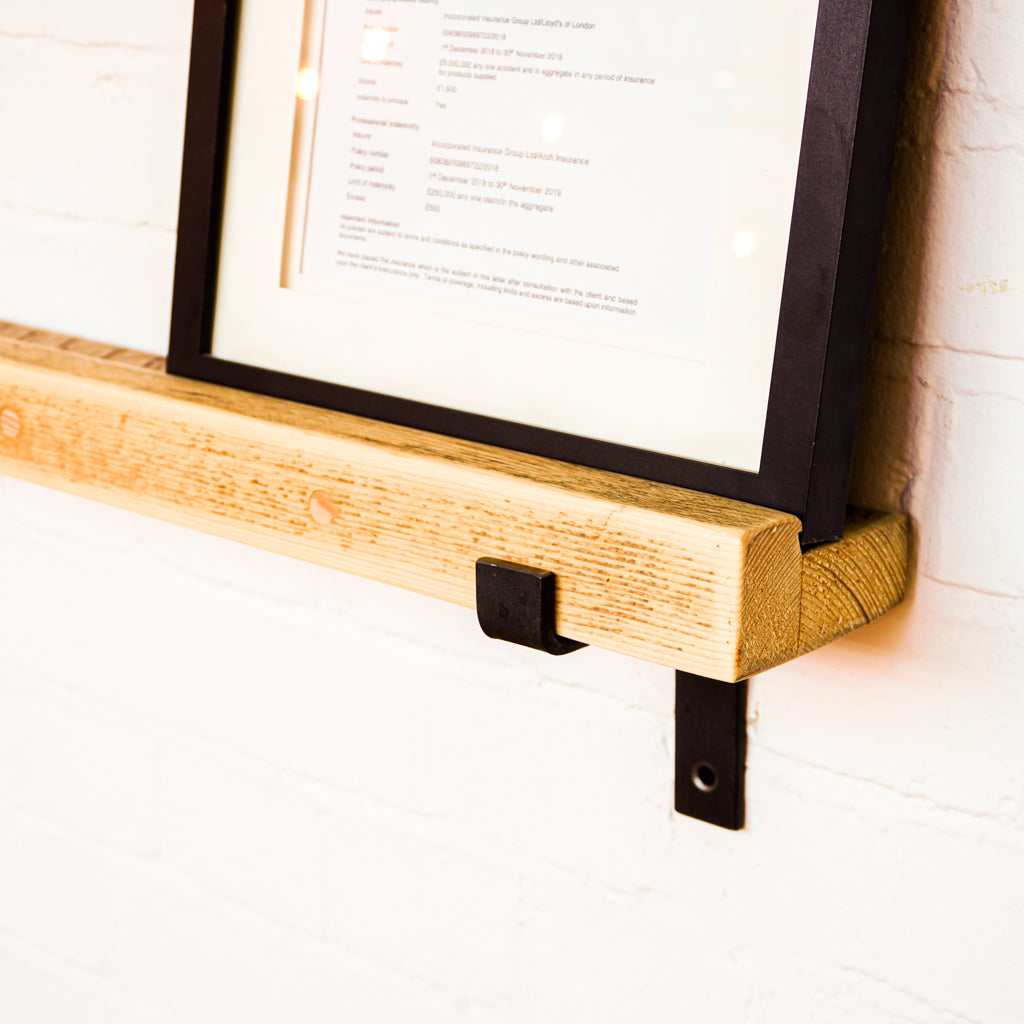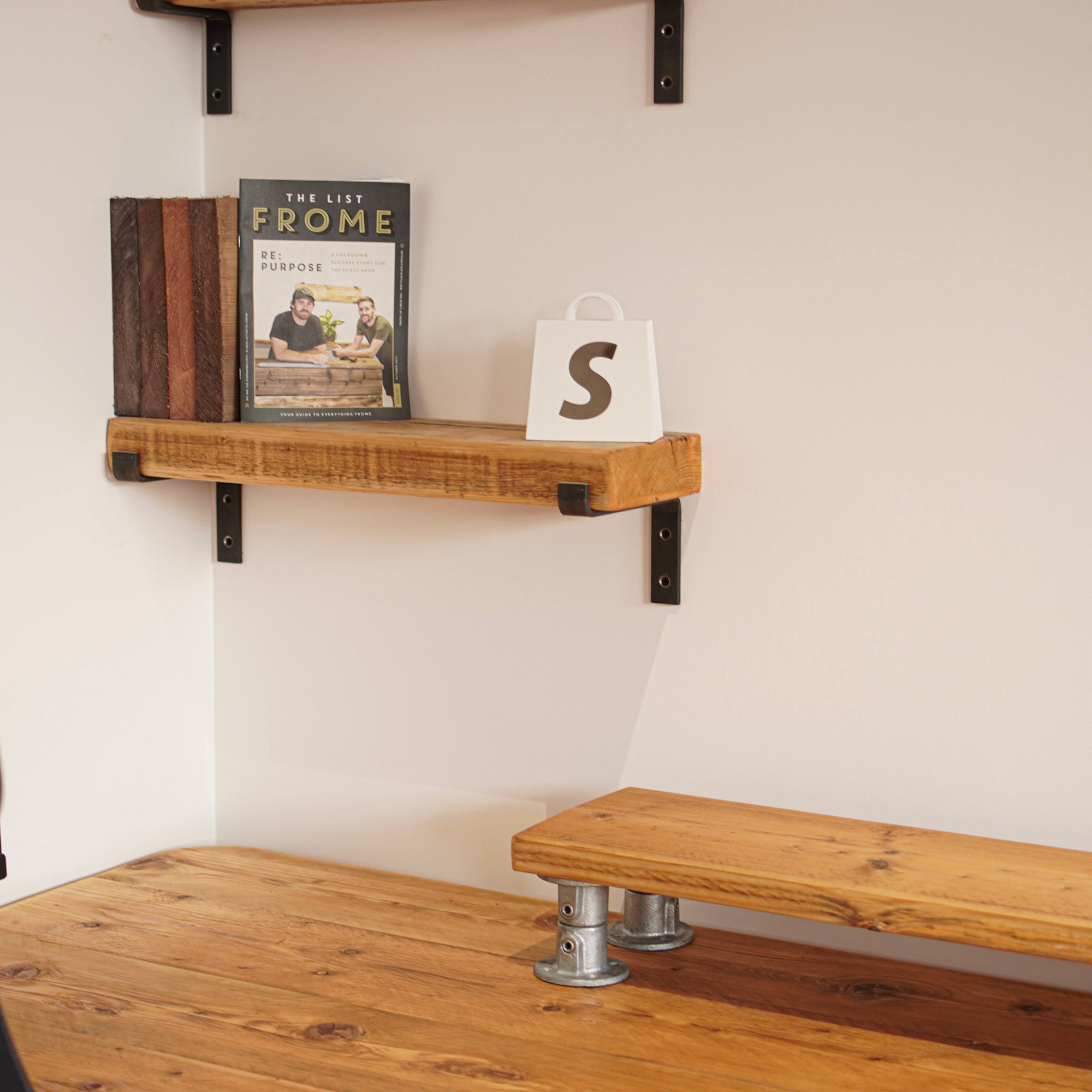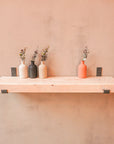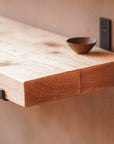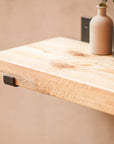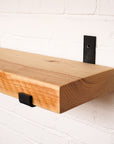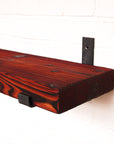Beautifully Hand Made
How To Arrange A Shelf Display
MADE IN FROME, SOMERSET

Arranging a shelf is either the easiest job in the world or one of the hardest, as there are so many options for what you can place, how to arrange them and how all of this fits together with the rest of a room’s design.
At its simplest, as long as everything fits and you are happy with how it all looks, then arranging a shelf is easy. However, there are a lot of little flourishes, design rules and shelving faux pas that can leave it feeling cluttered, untidy or altogether a little unsatisfying.
Thankfully, with our 15 years of experience turning rustic reclaimed boards into gorgeous scaffold board shelves, we can not only help guide you towards the perfect shelf but also advise you on how to arrange your shelf for the perfect impact.
To help with this, we are not only leaning on our knowledge of the different types of wood used for our shelving, but also some top design tips, rules of thumb and common mistakes we have learned along the way.
You don’t need to follow every tip to the letter, but use them and our shelving kits as an inspirational springboard to your perfect shelving display.
Follow The Rule Of Thirds
As many avid photographers know, the Rule of Thirds is the idea of dividing your space into roughly equal spaces and creating focal points that will attract the interest of any onlookers.
Depending on how tall, how sturdy and how chunky your shelving is, the rule of thirds can stretch both horizontally along the length of the shelf and vertically by incorporating both tall and short objects.
The easiest way to follow the rule is to divide your shelf into three and group related but noticeably distinct items together. That way, you provide variety and personality in one cohesive space.
Avoid: Repetitive Arrangements
Rules are meant to be tweaked and used to suit you, so try to avoid being too even with your divisions and your shelf arrangements in general.
Variety is essential for keeping the eye excited and expressing your individuality, so feel free to mix it up.
Tell A Story With Your Shelves
If you look at every professional shelving arrangement, regardless of what they have on them, the common thread that every effective shelving design has is that it has a story to tell.
Group different objects together, but focus them around particular themes that provide some insight into who you are, as that will not only make it personally enjoyable but give your guests an instant insight into who you are as a person.
If you are an adventurous type, keep a few trinkets, artefacts and tools grouped together. If you collect memorabilia, group an interesting variety of pieces based on a favourite movie or TV show.
As with storytelling, whilst there may only be seven basic stories you can tell, the experimentation and personal touches create a limitless wealth of options you can choose from for your shelf.
Avoid: Filling Every Corner
Telling a story through grouping and shelving also requires some cohesion and discipline, as whilst we may have a lot of different trinkets we want to show, filling an entire shelf space with them can do more harm than good.
Instead, make sure to leave some space, avoid more than a dozen items per group, and put smaller items in a basket or on a serving board to help them stand out more.
Take Advantage Of Negative Space
Much like how the Rule of Thirds was adapted from photography and helped create some beautiful shelving ideas, the concept of negative space is an essential part of interior design, particularly when it comes to how to group pieces together on a shelf.
The room you leave is as important as the room you fill, so make sure there is some space between items to allow each object to stand out more on its own. You will be astonished at the difference a tiny bit of space can make.
Avoid: Going Too Far With Minimalism
Of course, it is just as easy to overdo minimalism as it is to create an overcrowded space, and there is a fine line between disciplined and empty.
Ideally, you want your shelves to not be overloaded with items, but also have enough on display to make the room feel personal, lived in and expressive.
If you are worried about the entire wall being bare, our range of cladding can make a huge difference, but incorporating taller pictures at the back of the shelf to frame the items in front of it can also make a world of difference.
Play With Shapes And Textures
Contrast makes a huge difference in helping different pieces stand out, and an easy way to create a striking display is to experiment with angles, shapes, heights and textures.
A smooth glass vase or display feature will stand out next to a stack of books, and different types of metal objects will create unique finishes and play with the light in interesting ways.
Avoid: Too Many Colours
Typically, you want to avoid having too many colours to reduce the risk of unsightly colour clashes. Generally, the magic number is to have no more than three, and ensure that they are either shades of the same colour or inherently go well together.
Too much colour can look overly busy, particularly if the goal is not to evoke a vibrant rainbow or similar multicoloured design.
Use Greenery Effectively
Everyone loves plants, and it is very easy to effectively incorporate them into your shelving design. Our use of reclaimed wood helps greenery to stand out even more.
The best part of using plants is that they inevitably create asymmetry and varying textures and sizes by simply existing. Take a trip to a garden centre and see if any small potted plants catch your eye.
Avoid: Making It Impractical
Of course, if you are using plants, then you also will need to water them, so avoid putting plants in locations that make it impossible for you to water them easily.
Few things ruin the look of a room quicker than dead plants, so if you are worried about keeping them maintained, stick to succulents or cacti.
Ready to use industrial character to add a new dimension to your home? Explore our wide range of shelving made with new and reclaimed scaffold boards. Take advantage of their heritage and durability when creating beautiful displays at home.

